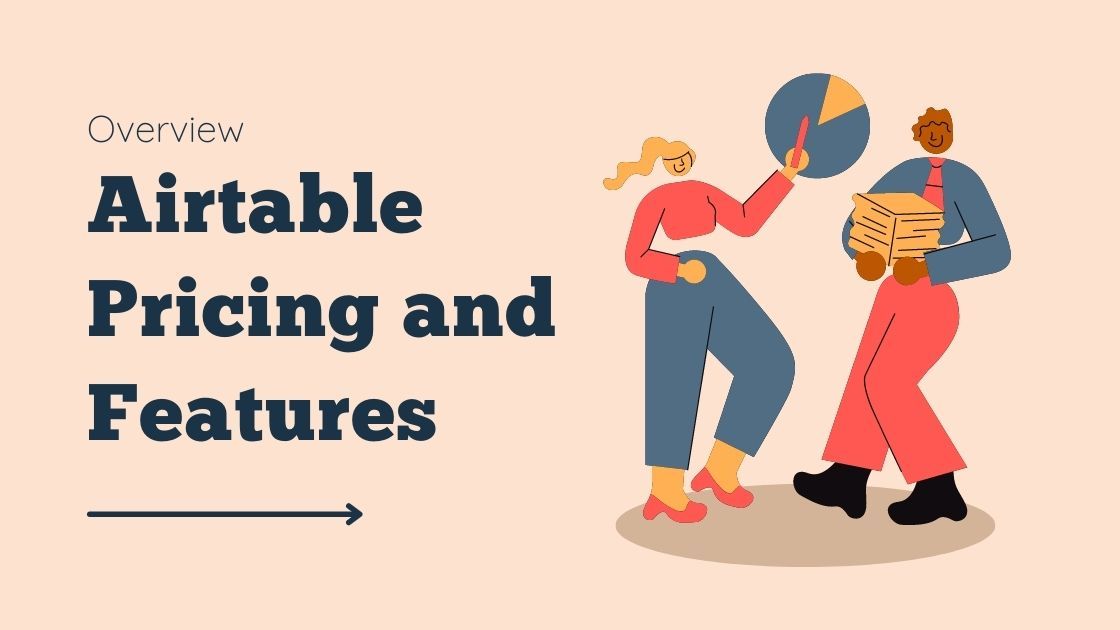You're probably already familiar with popular cloud-based spreadsheet tools like Google Sheets. These tools can be indispensable for a wide range of projects, whether they involve creating the simplest forms, to designing databases and sophisticated financial records. Airtable is a popular alternative that incorporates all of the flexibility and functions of popular spreadsheet applications, and combines them with a number of dynamic database features, giving you the best of both worlds.
What Is Airtable?
Airtable is a collaborative platform where you can create and share relational databases. While you may visualize boring spreadsheets when you hear the word “database,” Airtable makes databases incredibly versatile. This versatility makes is as valuable to teams as it is to individual users.
Airtable's clean, easy-to-use user interface, makes it more visually appealing than many spreadsheet tools. You can use it to plan and manage your projects, track your inventory, or even as a CRM tool.
If you’re a blogger, you can use Airtable to manage your content. If you’re running a business, you can use it to keep track of your inventory. If you are a project manager, you can easily collaborate with your team and manage tasks more efficiently.

Getting Started With Airtable
Airtable can be accessed from your browser or its through its desktop and mobile apps. To get started with Airtable, you can sign up using your work email or Google account. A dialog box will appear where you need to select your purpose of using the tool. This helps Airtable personalize your experience on the platform.
Next, you will be redirected to a screen where you can invite your team members by inputting their email addresses (or by sending them an invite link directly). If you want to add your team later, you can click on “Skip,” and the platform will redirect you to the dashboard.
You have three options to make your first database. One is to build one from scratch, which gives you a blank base where you have to input your data. Another is to import data from CSV files or existing projects created in Excel and Sheets. Lastly, you can use any of the fully customizable templates Airtable offers.
Airtable Features Overview
Customizable Fields
Airtable fields can store a range of information, including texts, numbers, checkboxes, file attachments, dropdown menus, and more. To add to it, you can customize these fields according to your needs. You can also add notes, images, links, barcodes, ratings, and many other types of data in the fields. You also have the option to link fields between tables to establish relations between them. You can get rid of the hassle of updating the data in multiple fields manually by linking tables, which will update in real-time once you make any changes.
Revision History
Airtable offers you the option to check your edit history for each database. This also helps you to see which member of your team made the change, and improves accountability and progress monitoring. You can review any changes made to the data and revert to previous versions needed. Although the revision history feature is limited in the free plan, you track up to one year of history by upgrading to the paid plans.
Data Views
Airtable offers multiple ways of visualizing your data. The default view is a “Grid View,” which is, in effect, a spreadsheet. You also get Calendar view, Kanban view, Form view, and Gallery view. You have the option to create different views of the same base without having to create duplicate databases.
Blocks
Blocks are a unique feature of Airtable, which you can use to add functionalities to your bases. There are tons of blocks to choose from, such as Maps, Charts, 3D Model Makers, Timers, Chat, Calendars, and more. Blocks are not available in the free version but are certainly worth paying for.
Templates
Creating a base from scratch requires a lot of work. You need to specify data types, organize the information, and design the base before you actually start recording or inputting information. Airtable makes this incredibly easy for you by offering a range of templates for startups, non-profits, publishers, engineers, and more. You can also find templates for personal use such as planning a party or compiling recipes.
How Much Does Airtable Cost
Free Plan
Price
Free!
What do you get?
You can create unlimited bases with up to 1,200 records per base. You also get all the data viewing options including Grid, Calendar, Kanban, Form, & Gallery view. Additionally, you can attach up to 2GB of files per base.
Who is it for?
The free plan is ideal for personal use and for teams looking for new database tools.
Plus
Price
$12/month per seat, with a discounted price of $10 for annual payment. A free trial is available for the Plus plan.
What do you get?
The Plus plan offers everything in the free version, along with 5,000 records per base, and a 5GB limit on attachments per base. You can check up to 6 months of revision and snapshot history and create one synced table per base.
Who is it for?
The Plus plan can be an excellent option for small to mid-sized teams that handle moderate databases and need more space.
Pro
Price
$24/month per seat, with a discounted price of $20 for annual payment. Free Trial available.
What do you get?
You get everything included in the Plus plan, along with 50,000 records and 20GB of attachments per base. You also get unlimited apps and 1-year revision & snapshot history, as well as the ability to edit Field & table permissions.
Who is it for?
If your team needs to collaborate efficiently on handling complex workflows, consider upgrading to the Pro plan.
Enterprise
Price
Contact Sales for a price quote.
What do you get?
The Enterprise plan comes with unlimited workflows, 100,000 records and 1,000GB of attachments per base, and a 3-year revision & snapshot history. You also get better security and admin control features, along with a dedicated success manager.
Who is it for?
If your organization requires better security, control, and support, which the Plus or Pro version cannot cover, you might consider paying for the Enterprise plan.
Where Airtable Beats Google Sheets
While the major difference between Airtable and Google Sheets is that Airtable manages “databases” instead of “spreadsheets”, there are some powerful features in the free version that can make you stop using Google Sheets altogether.
Organizing Data
First things first, Airtable and Google Sheets are comparable when it comes to data calculations. But Airtable proves to be more efficient when it comes to organizing, storing, and retrieving data. You can easily attach files directly to your Airtable bases. These files can be images, videos, or even documents. Airtable helps you keep all of these attachments in one place.
Automation
One of the best features of Airtable is its ability to automate tasks. Automations can be made using simple "if this, then that" conditions that trigger actions. For example, when you schedule an event in your database, you can automate it to create a calendar event.
Integrations & Apps Marketplace
Airtable offers a wide range of integrations, including Google Drive, Salesforce, Asana, Github, Instagram, and more. Apart from the built-in integrations, you can use Zapier, Workato, Integromat, or Automate.io to connect to more than a thousand apps and services around the web.
You can also add more functionalities and plug-ins from its Apps Marketplace. These apps include the ones Airtable officially created, along with the ones the members of the Airtable community submitted. Popular apps that you can add to further enhance the functionalities of your bases include Gantt charts, Pivot tables, Time Trackers, and more.
Final Thoughts
If you use spreadsheet apps like Google Sheets to manage your projects, Airtable offers you a powerful option to do more than just record and edit information. Organizations like BuzzFeed, Medium, JetBlue, and Shopify currently use Airtable - and you can certainly understand why.
The best part about Airtable is its generous free plan that covers all the basic tools you need to organize your work efficiently. Although it might take you some time to fully understand the tool, you won’t regret putting in the effort.


